Uíge is a province in Angola known for its diverse natural habitats and its wide variety of bird species. The province is home to various habitats, from wetlands to tropical forests, and each of these habitats is home to a unique set of birds.
Bird watching is popular in Uíge, as visitors can find various species from local and migratory populations.
Among the most common birds in Uíge are the White-faced Whistling Ducks, the African Jacanas, the Common Waxbills, and the African Grey Parrots. Uíge is also home to rare and endangered bird species, such as the Red-throated Bee-eater and the Grey-crowned Crane.
Uíge is an ideal destination for any birdwatcher with its diverse bird population.
11 Birds to Watch in Uíge
Uíge is a province in Angola known for its diverse natural habitats and its wide variety of bird species. The province is home to various habitats, from wetlands to tropical forests, and each of these habitats is home to a unique set of birds.
Here are 11 birds that you should watch out for when visiting Uíge:
1. Greater Flamingo
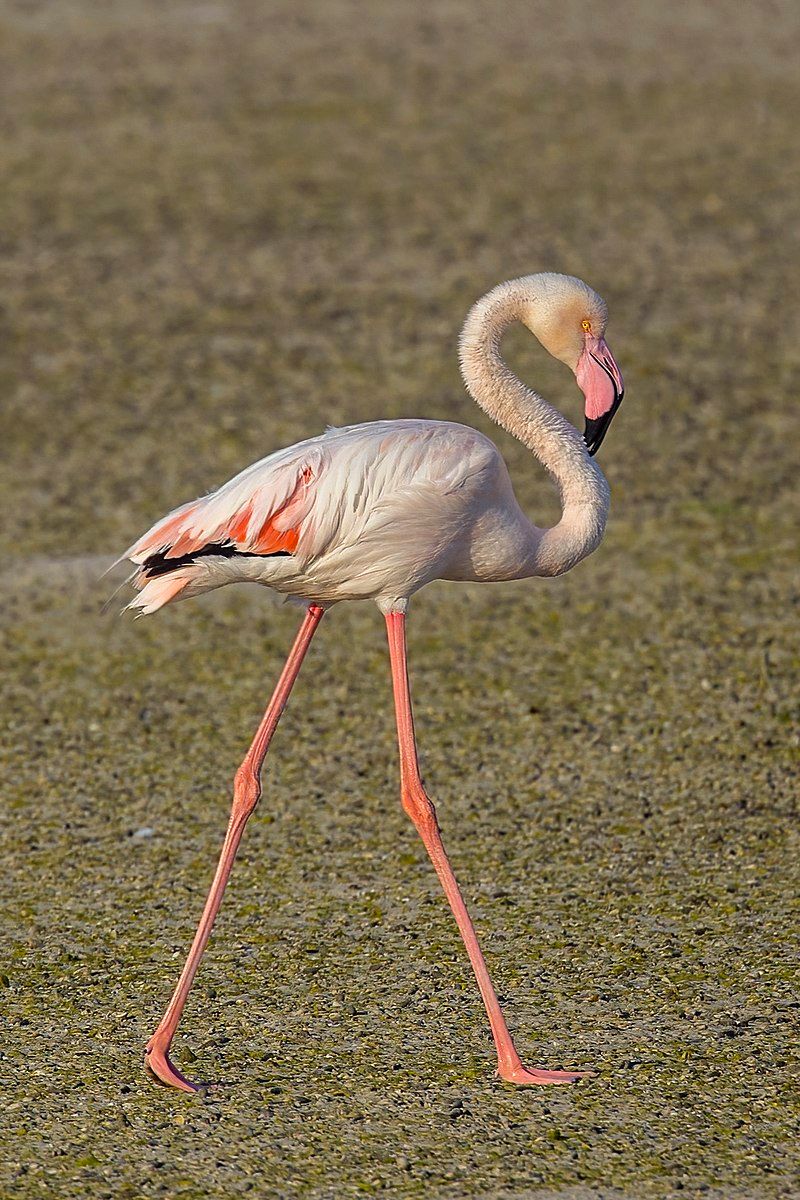
The greater flamingo is a species found in many areas of the world. It is the most widespread and most significant of the flamingo species.
They are native to Northern and Sub-Saharan African countries, the Indian Subcontinent, the Middle East, the Levant, the Persian Gulf, the Gulf of Aden, the Red Sea, and Southern Europe.
They are most commonly found in the Old World, where they thrive in warm and tropical climates. The greater flamingo is easily identified by its bright pink feathers, long legs, and curved beak. They usually feed on plants, small fish, shrimp, and other aquatic animals.
They often stand in large flocks and can even form groups of tens of thousands of birds.
They use their curved beaks to filter food from the water and often feed using their webbed feet. The greater flamingo is an essential species for the regions it inhabits, as it helps to maintain a healthy ecosystem.
They are also famous for birdwatchers, as they are easily spotted in large groups. They are certainly one of the most beautiful birds in the world, and they have a fascinating life cycle worth learning more about.
| Kingdom | Animalia |
| Phylum | Chordata |
| Class | Aves |
| Order | Phoenicopteriformes |
| Family | Phoenicopteridae |
| Genus | Phoenicopterus |
| Species | P. roseus |
2. Blue-spotted Wood Dove
The blue-spotted wood dove is a bird species belonging to the Columbidae family. This species is abundant throughout Africa south of the Sahel desert. It is also present in East Africa, though to a lesser extent.
However, it is not found in southern Africa. This dove species is quite widespread in Africa and can be found in various habitats, including open woodlands, savannas, grasslands, and mangroves.
It is usually found in small flocks and is an important food source for many predatory birds, such as eagles and hawks. The blue-spotted wood dove is a beautiful bird with its grey-brown upperparts and blue-spotted belly.
The blue-spotted wood dove feeds mainly on the ground, foraging for seeds, insects, and other small invertebrates. It usually breeds during the wet season when food is most abundant.
The nest is usually a shallow platform made of twigs and leaves and is generally placed on the fork of a tree. The female lays two white eggs, which both parents take turns incubating.
In conclusion, the blue-spotted wood dove is a species of bird that is abundant throughout Africa south of the Sahel desert and is partially present in East Africa. It is an important food source for many birds of prey and is a beautiful species.
Its diet consists mainly of seeds, insects, and other small invertebrates, and it breeds during the wet season.
| Kingdom | Animalia |
| Phylum | Chordata |
| Class | Aves |
| Order | Columbiformes |
| Family | Columbidae |
| Genus | Turtur |
| Species | T. afer |
3. Namaqua Dove
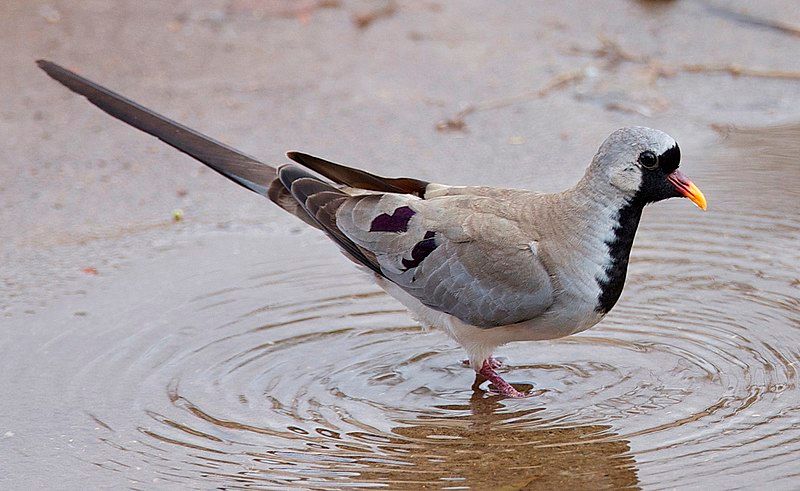
The Namaqua dove is a small species of pigeon found throughout many regions of Africa, the Middle East, and Madagascar. It is the only species to belong to the genus Oena.
This dove species is particularly unique in its many different habitats, ranging from dry, sandy deserts to dense woodlands. Its range is vast, spanning from the Sahara Desert in the north down to the southern parts of the continent.
This species is also found in Arabia and Madagascar, although it is much less common there. The Namaqua dove is relatively tiny, with a body length of only about 9 inches. Its wings are brown and are marked with a bright white line.
Its head and neck are gray, and its chest and belly are white. This species also has a unique call: a loud, sharp, whistling sound. The Namaqua dove feeds mainly on grass seeds found in grassy areas or along the edges of forests.
It also eats some insects and will sometimes feed on fruit. This dove species is also known to gather in large flocks and is often seen in shady areas such as trees or bushes.
The Namaqua dove is an exciting bird species and an integral part of many of the ecosystems in which it lives. Its extensive range and unique call make it a species worth protecting.
| Kingdom | Animalia |
| Phylum | Chordata |
| Class | Aves |
| Order | Columbiformes |
| Family | Columbidae |
| Genus | Oena |
| Species | O. capensis |
4. Black-winged Stilt
The black-winged stilt is a bird in the avocet and stilt family. It is commonly found in many parts of the world and is easily recognizable due to its long legs. The scientific name for this bird is H.
Himantopus and it is generally accepted that this species is the same worldwide, with no significant differences between populations in different regions.
This is likely a result of the bird’s wide distribution, allowing it to mix and mingle with other populations over a large area.
This bird species is usually found in wetlands and can be seen in shallow pools of water, either standing on one leg or wading through the water. It is a relatively small bird, typically reaching a length of 30-35 cm and a weight of around 140-200 grams.
The black-winged stilt is a graceful bird, and its long legs make it an excellent swimmer and forager.
| Kingdom | Animalia |
| Phylum | Chordata |
| Class | Aves |
| Order | Charadriiformes |
| Family | Recurvirostridae |
| Genus | Himantopus |
| Species | H. himantopus |
5. Bar-tailed Godwit
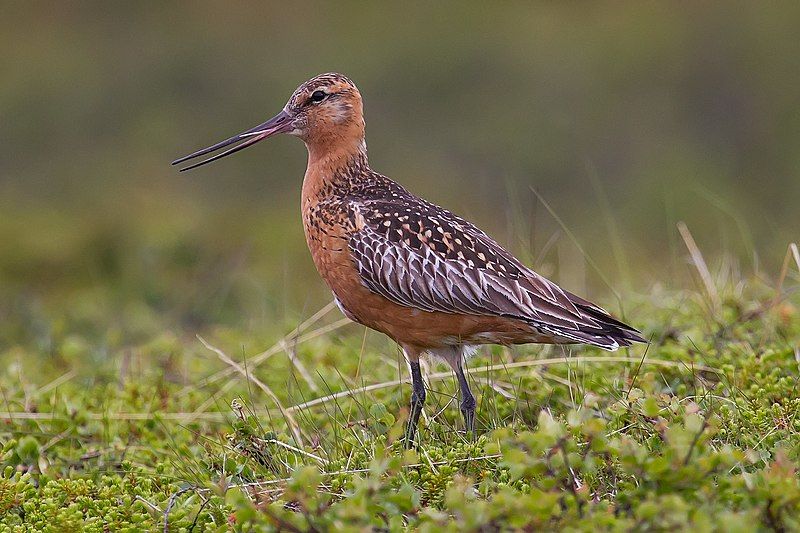
The bar-tailed godwit is a type of water bird belonging to the family Scolopacidae. It is a large bird with distinctive red breeding plumage, long legs, and an upturned bill.
This migratory solid bird feeds on bristle worms and shellfish on coastal mudflats and estuaries. Its plumage becomes more vivid during the breeding season, and its long legs become bright red.
The godwit has an impressive wingspan and is capable of long migrations, making its way from the Arctic tundra to the tropical regions of New Zealand. It also has an incredibly long bill, used to probe the mud for food.
This species is an integral part of the coastal ecosystem, as it helps to keep the mudflat healthy by feeding on small invertebrates. The bar-tailed godwit is a fascinating bird that is vital to the coastal environment.
| Kingdom | Animalia |
| Phylum | Chordata |
| Class | Aves |
| Order | Charadriiformes |
| Family | Scolopacidae |
| Genus | Limosa |
| Species | L. lapponica |
6. Common Sandpiper
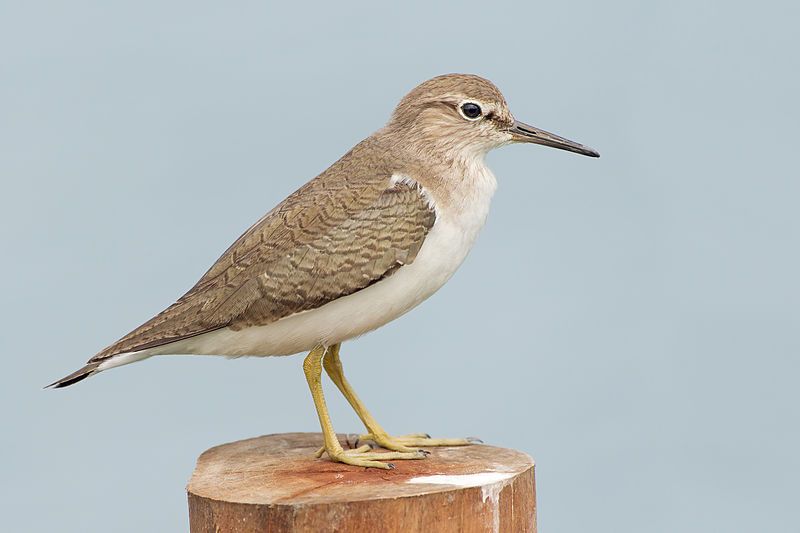
The common sandpiper is a small Palearctic wader from the genus Actitis. It and its American sister species, the spotted sandpiper, are two closely related species in different regions.
The two species are parapatric, meaning they are geographically separated but have a degree of overlap in their ranges.
This overlap means that individuals from either species may sometimes wander into the territory of the other and even settle down with a breeding pair of the opposite species. This can result in hybridization between the two species.
| Kingdom | Animalia |
| Phylum | Chordata |
| Class | Aves |
| Order | Charadriiformes |
| Family | Scolopacidae |
| Genus | Actitis |
| Species | A. hypoleucos |
7. Great Crested Grebe
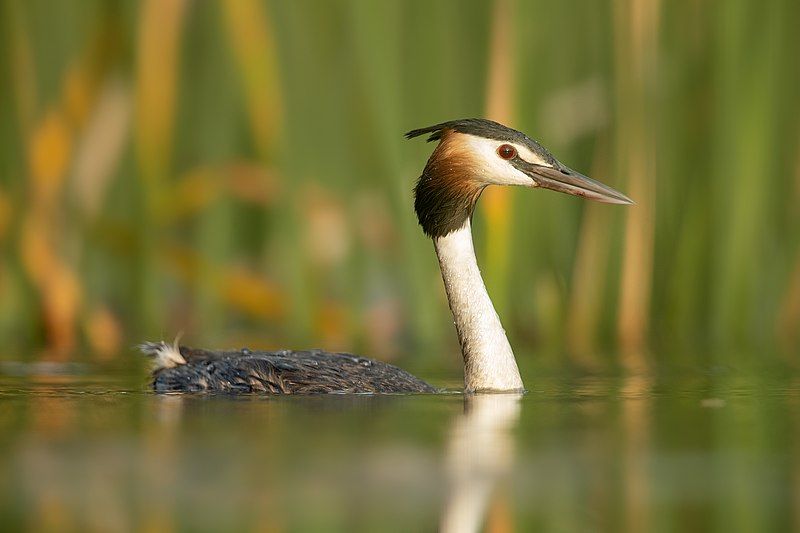
The great crested grebe is a species of water bird that belongs to the grebe family. It is native to Europe, Asia, Africa, and Australia and is mainly found in freshwater lakes and ponds. This species of bird is known for its elaborate mating display.
During the breeding season, the male and female birds will engage in a courtship dance where they bow to each other, make loud calls, and leap out of the water.
After mating, the female will lay a clutch of four to six eggs, which are incubated for about four weeks. Once the eggs have hatched, the male and female will take turns caring for the chicks until they are independent.
The great crested grebe is a fascinating species of bird, and its elaborate mating display is just one of the many reasons why it is so beloved by birdwatchers.
| Kingdom | Animalia |
| Phylum | Chordata |
| Class | Aves |
| Order | Podicipediformes |
| Family | Podicipedidae |
| Genus | Podiceps |
| Species | P. cristatus |
8. Black-bellied Bustard
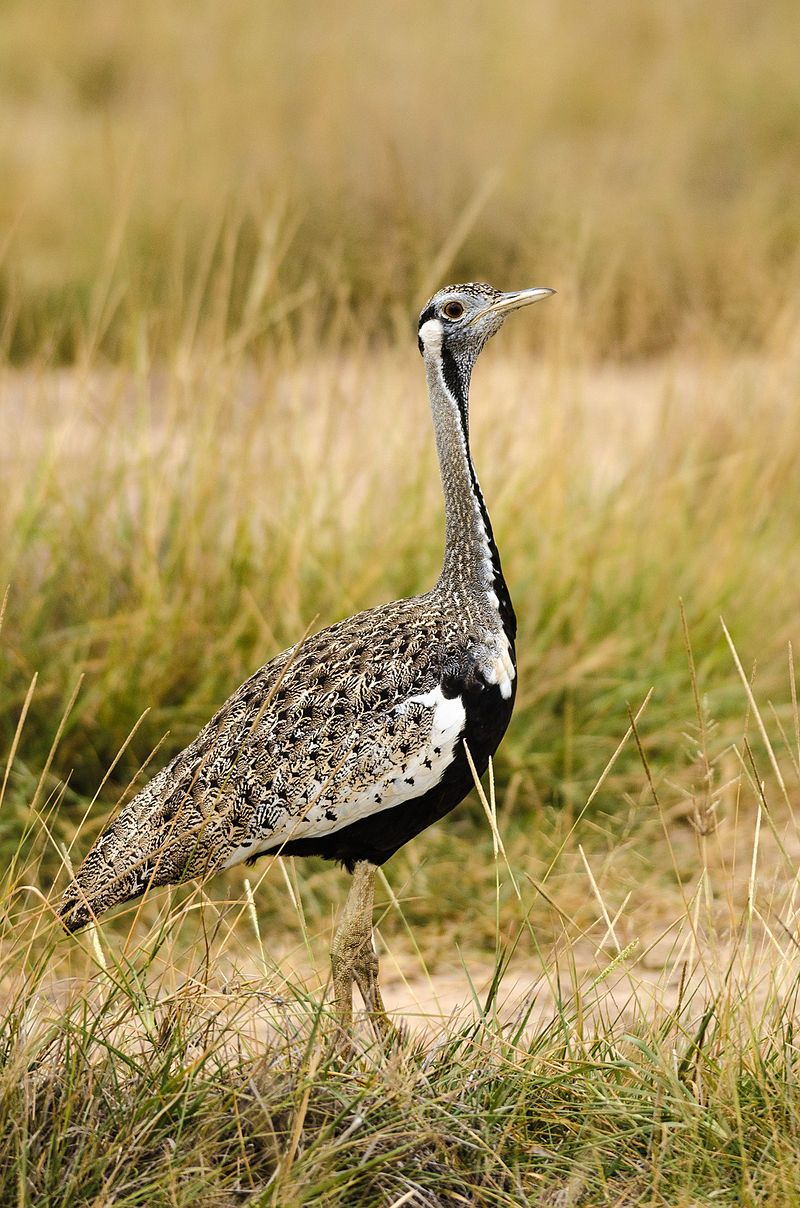
The black-bellied bustard, scientifically known as the Eupodotis melanogaster, is a ground-dwelling bird species belonging to the bustard family. Native to the African continent, this species is also known as the black-bellied korhaan.
The black-bellied bustard is a large bird, with males reaching up to 2.1 feet in length and weighing up to 8.2 lbs. The plumage of these birds is generally light brown, with a white belly and a black chest.
The black-bellied bustard’s diet consists mainly of insects, seeds, and small reptiles. These birds prefer to live in open grassland and dry savanna habitats and can tolerate human presence in their vicinity.
During mating season, the males of this species perform elaborate courtship displays with their wings and tail feathers, which they use to attract the attention of potential mates.
The black-bellied bustard is listed as a species of Least Concern by the International Union for Conservation of Nature due to its widespread range and stable population.
| Kingdom | Animalia |
| Phylum | Chordata |
| Class | Aves |
| Order | Otidiformes |
| Family | Otididae |
| Genus | Lissotis |
| Species | L. melanogaster |
9. Lesser Flamingo
The lesser flamingo is a species of flamingo that lives in many parts of sub-Saharan Africa and western India. It is the most numerous species of flamingo and is well-adapted to the hot and dry climates of its natural habitat.
It is known for its distinctive pink and orange feathers, which it gets from its diet of algae and small crustaceans. The lesser flamingo can fly great distances, and some birds are not uncommon to wander away from their home range.
These birds are referred to as vagrants and have been reported further north than their typical range. However, these sightings are rare and usually represent an individual bird that has wandered away from its flock.
| Kingdom | Animalia |
| Phylum | Chordata |
| Class | Aves |
| Order | Phoenicopteriformes |
| Family | Phoenicopteridae |
| Genus | Phoeniconaias |
| Species | P. minor |
10. Red-crested Turaco
The red-crested turaco is a species of bird from the turaco family, a group of African otidimorph birds. This bird is only found in western Angola and is a frugivore, meaning its diet consists mainly of fruits.
Its distinguishing feature is its red crest, found in both males and females. The red-crested turaco has a unique call that can be likened to a jungle monkey.
Its loud and distinctive call can be heard from some distance away and is one of the most recognizable sounds of the African rainforest. This species is generally found in pairs or small groups and can often be seen perched atop trees or flying in the canopy.
The red-crested turaco is an integral part of the African rainforest ecosystem, and its presence is essential for the environment’s health.
| Kingdom | Animalia |
| Phylum | Chordata |
| Class | Aves |
| Order | Musophagiformes |
| Family | Musophagidae |
| Genus | Tauraco |
| Species | T. erythrolophus |
11. Western Crested Guineafowl
The western crested guineafowl is a species of guineafowl bird found in the Numididae family. It is native to open forest, woodland, and forest-savanna mosaics, a type of habitat with interspersed patches of trees and grassland.
The western crested guineafowl was previously called the crested guineafowl when three species were grouped. This species of guineafowl is found in areas of Africa, from Senegal to Ethiopia, and is mainly found in the forested regions of the continent.
It is a medium-sized bird with a body length of up to 45 cm and a wingspan of up to 74 cm. The western crested guineafowl has a greyish-brown coloration with black and white markings on its head and neck. It also has a distinctive crest of feathers on its head.
The western crested guineafowl is an omnivore, feeding on various insects, fruits, and seeds. It is a social bird usually found in small to large flocks. It is also a territorial bird and will defend its territory against intruders.
| Kingdom | Animalia |
| Phylum | Chordata |
| Class | Aves |
| Order | Galliformes |
| Family | Numididae |
| Genus | Guttera |
| Species | G. verreauxi |
Conclusion
Birds are a vital part of the Uíge landscape. They serve as an essential source of food for local people, provide crucial ecological services such as pest control and pollination, and bring beauty and joy to the people of Uíge.
While some species of birds are in decline, there is much that can be done to protect them and ensure their continued existence in the region.
By protecting their habitats, limiting the use of pesticides, and educating the public about the importance of birds in the local environment, Uíge can ensure the continued survival of its beloved birds.